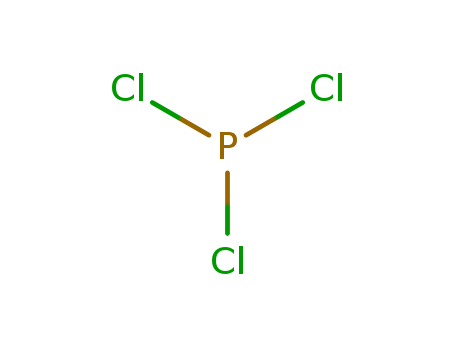10.1021/ol0521432
The research focuses on the selective diphosphorylation, dithiodiphosphorylation, triphosphorylation, and trithiotriphosphorylation of unprotected carbohydrates and nucleosides using solid-phase synthesis. The purpose of this study was to develop a method for the selective synthesis of these compounds, which are challenging to produce due to the lack of regioselectivity in traditional solution-phase methods. The researchers used aminomethyl polystyrene resin-bound linkers of p-acetoxybenzyl alcohol, which were subjected to reactions with diphosphitylating and triphosphitylating reagents to yield polymer-bound reagents. These were then reacted with unprotected carbohydrates and nucleosides to produce monosubstituted nucleoside and carbohydrate diphosphates, dithiodiphosphates, triphosphates, and trithiotriphosphates with high regioselectivity. The conclusions of the research highlight the advantages of the solid-phase approach, including the production of monosubstituted derivatives, high selectivity, facile isolation and purification of products, and the trapping of byproducts on resins. The chemicals used in the process included phosphorus trichloride, 3-hydroxypropionitrile, diisopropylamine, water, and 1H-tetrazole, among others, to synthesize the diphosphitylating and triphosphitylating reagents, as well as various unprotected nucleosides and carbohydrates for the reactions.
10.3390/molecules24244531
This research aimed to investigate the anti-inflammatory potential of a series of eighteen ring-substituted N-arylcinnamanilides, which were previously known for their antimicrobial activity. The study focused on determining the molecular structure of (2E)-N-(2-bromo-5-fluorophenyl)-3-phenylprop-2-enamide using single-crystal X-ray analysis and assessing the compounds' ability to attenuate lipopolysaccharide-induced NF-κB activation, a key factor in inflammation. The chemicals used in the synthesis process included cinnamic acid, phosphorus trichloride, and various aniline derivatives. The conclusions drawn from the study indicated that most of the tested compounds showed significant attenuation of NF-κB activation, with some being more potent than the parent cinnamic acid. Notably, (2E)-N-[2-chloro-5-(trifluoromethyl)phenyl]-3-phenylprop-2-enamide, (2E)-N-(2,6-dibromophenyl)-3-phenylprop-2-enamide, and (2E)-N-(2,5-dichlorophenyl)-3-phenylprop-2-enamide demonstrated the highest inhibition effect at a concentration of 2 μM, showing similar effectiveness to the reference drug prednisone. The study suggested that the anti-inflammatory activity was positively influenced by di-substitution on the C(2,5)′ or C(2,6)′ positions with lipophilic and bulky moieties, leading to a non-planar configuration of the entire system.
10.1080/10426500902737356
The research investigates the amidoalkylation reaction of phosphorus trichloride with acetamide and alkyl oxocycloalkanecarboxylates. The study focuses on the production of side-products during this reaction. Key chemicals involved include phosphorus trichloride, acetamide, and various ethyl oxoalkanecarboxylates such as ethyl 2-oxocyclopentanecarboxylate, ethyl 1-oxocyclohexanecarboxylate, and ethyl 4-oxocyclohexanecarboxylate. The reaction yielded several products, including 2-amino-2-phosphonocycloalkanecarboxylic acids, 1-aminocycloalkanephosphonic acids, 1-aminoethane-1,1-diphosphonic acids, and 1-hydroxyethane-1,1-diphosphonic acids. The study highlights the formation of these side-products and their impact on the overall reaction pathway, providing insights into the limitations of the amidoalkylation procedure.
10.1021/ja904926e
The research investigates the effects of formacetal modifications on the thermal stability, hydration, and structure of RNA and DNA oligonucleotides. The study finds that formacetal modifications stabilize RNA helices by +0.7 °C per modification but destabilize DNA helices by -1.6 °C per modification. Osmotic stress experiments reveal that formacetal modifications have little impact on RNA hydration but significantly decrease DNA hydration. 2-Chlorobenzoyl Chloride and Phosphorus Trichloride (PCl3) are used in the synthesis of phosphonate dimers, which are intermediate compounds in the formation of formacetal-modified oligonucleotides. X-ray crystallography shows that formacetal linkages fit almost perfectly within an A-type DNA helix without causing significant structural distortion. These findings suggest that RNA may tolerate nonionic backbone modifications better than DNA, and formacetal modifications could be useful for RNA-based gene control strategies, such as RNA interference.



 T+,
T+, C
C


